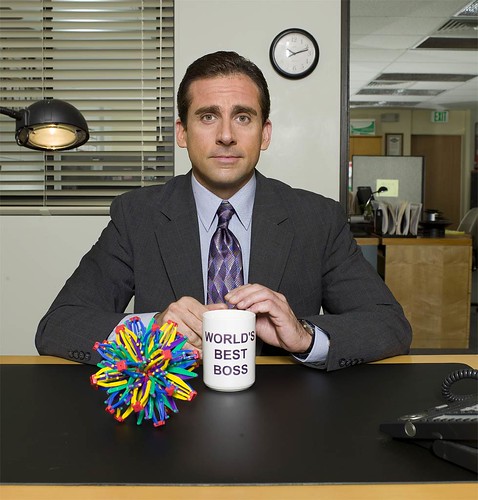TV Cultures: Blog Post #5 – Comedy & the Mockumentary
Whether you’re a fan or not, reality TV has been on the rise over the past 15 years or so. Lifestyle programs, singing competitions, game shows and their ilk are dominating the schedule due to their popularity and inexpensive production costs.
So how has comedy, which was arguably the most popular genre throughout the 1970s, 80s and 90s, adapted to these changes and continued to engage audiences?
Move over Seinfeld, Friends, Frasier and their like –Umberto Eco’s articulation of “the already said” implies that if we revisit the past (in this case, comedy as a genre that has been lived and enjoyed for decades on television), we must do so with a sense of irony (Collins 1992).
And thus, the cult of the mockumentary is born.
A hybridised genre that combines the stylistic conventions of documentary with fictional content, the mockumentary generally carries postmodern traits of pastiche humour and self-reflexive satire (Collins 1992). Its hyperconscious nature challenges the fundamental issue of documentary’s relationship to truth, and usually emphasizes the irony of realistic, lived situations.
Classic and celebrated examples of the mockumentary include Zelig (1983) and This is Spinal Tap (1984), as well as more contemporary texts such as Blair Witch Project (1999) and Cloverfield (2008). Evidently, the ‘mockumentary’ style also serves as a vehicle for horror and thrillers, challenging perceptions of reality and creating a more immersive atmosphere through its ‘fly-on-the-wall’ viewpoint.
Generally, a mockumentary will make use of interviews, location shooting, handheld camera techniques and natural lighting to capture a ‘cinema verite’ style. But it will also use fictional characters and narratives, and directed scenes and scripts in its pursuit of a fictional story.
The Office is one of the most successful mockumentary series to date and uses the mockumentary style to cast irony over issues in the workplace and individuals within institutions. Originally produced for the UK’s BBC, it has spawned a variety of transnational remakes in America, Chile, Germany, France, French Canada, Israel and Brazil.
Depicting the everyday lives of office workers, the show befits a “docusoap” genre that is driven by personal relationships. In the American version, the romantic relationship between Jim and Pam predominantly drives the series, as does Dwight’s never-ending quest for Michael’s approval.
But at the heart of the show is the cringe-worthy boss, Michael Scott. His failed attempts at developing true friendships with his co-workers (cue the awkward “WAZAAAA!” scene with Jim) and deluded sense of value in the office (he owns a ‘World’s Best Boss’ mug… that he purchased himself) pit him as an insecure, unfulfilled and embarrassing character – so heartbreakingly and pitifully hilarious, but somewhat endearing.
In its style, the show utilises a number of documentary elements that challenge our expectation of reality by leaving in imperfections, such as shaky camera footage and soft-focus shots. Scenes are often shot from behind blinds to enhance our sense of being ‘on location’, peering in on the situations. Actors often look directly into the camera, and are also shot in interview formats against plain backgrounds as ‘talking heads’.
In this presentation of the office setting, the show also highlights and satirises the bleak reality of corporate life. Cutaway low-angle shots of the office use a bland monochromatic colour palette of browns and greys, with the droning sounds of printers and phones in the background. Paired together with Jim’s quote “I’m sorry, I’m actually boring myself” when he speaks about his work makes fun of the quotidian and generic nature of office work.
The Office also emphasizes way in which the mockumentary format can be appropriated for transnational audiences and tastes. For example, David Brent, the boss in the original UK version, is more self-deprecating and bitter, whereas Michael Scott carries a sense of endearing naivety. As such, the American version offers some relief from all his awkwardness and socially inappropriate behaviour, while the UK version leaves you suspended in the relentless shame of David Brent’s wicked sense of humour.
Overall, The Office reflects a successful reshaping of the traditional comedy, that has appropriated it for a postmodern context. It demonstrates that the TV format trade is applicable to fiction as well as reality TV. And it’s bigger and better than ever…
THAT’S WHAT SHE SAID!
Collins, J. 1992 ‘Television and Postmodernism’ in Channels of Discourse, Reassembled, ed. Allen, RC, 2nd ed, UNC Press, Routledge
